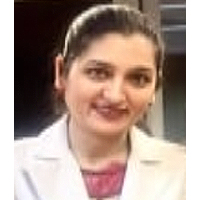The Effect of Shoulder Immobilization Position on Outcomes Following Rotator Cuff Repair: A Scoping Review
Published on: 20th August, 2024
Introduction: There has been growing interest in determining the influence of post-operative immobilization posture and rehabilitation protocol on healing rates and clinical outcomes. Current consensus calls for the use of an immobilization device post-operatively, which commonly comes in the form of a standard sling or an abduction brace with the arm positioned in varying degrees of abduction. There is a lack of high-level evidence in the literature to recommend one type of immobilization device or arm position over another. Objectives: This study aimed to summarize the current clinical and biomechanical evidence for the optimal postoperative positioning and bracing of the arm following arthroscopic rotator cuff repair. Methods: A comprehensive search of the electronic databases EMBASE, MEDLINE, and PubMed was performed using a combination of the following keywords and medical subject heading (MeSH) terms: ‘arthroscopic’, ‘rotator cuff repair’, ‘sling’, ‘brace’ and ‘immobilization’. This systematic review was conducted following the Preferred Reporting for Systematic Reviews and Meta-analysis (PRIMSA) guidelines. Two reviewers performed an independent assessment of the methodological quality of each eligible clinical study using the Methodological Index for Non-Randomized Studies (MINORS).Results: Based on current biomechanical evidence, placement of the arm into an abducted position following rotator cuff repair was found to be favorable. An abduction angle of 30° was associated with lower strain on the repair while maintaining appropriate contact pressure at the footprint. However, the use of an abduction brace did not result in a clinically significant improvement in long-term PROM, ROM, and re-tear rates when compared to a traditional sling in clinical studies.Conclusion: Despite observing favorable outcomes with abduction bracing after rotator cuff repair in biomechanical studies these findings were not reproduced in clinical studies. However, current clinical studies are comprised of small sample sizes, varying tear sizes, and significant heterogeneity in both, the degree of abduction and forearm rotation. Future studies should be directed towards prospectively investigating the effect of immobilization position among patients with similar rotator cuff tear sizes.
Drug Rehabilitation Centre-based Survey on Drug Dependence in District Shimla Himachal Pradesh
Published on: 6th January, 2025
Aim and objective: This study aimed to determine the prevalence and characteristics of drug dependency among patients in various rehabilitation centers in the Shimla district. Introduction: Drug abuse is a multifaceted and significant issue impacting individuals worldwide, and the city of Shimla in Himachal Pradesh is no exception. Despite its reputation as a picturesque hill station known for its natural beauty and rich cultural heritage, Shimla faces challenges related to substance abuse. Materials and methods: A cross-sectional survey was conducted, gathering demographic data, drug history, and indicators of dependency from the participants.Results: The findings revealed that 60% of the patients were drug-dependent, with 44% addicted to heroin and 11% to alcohol. Additionally, 60% of the patients reported a family history of chemical dependency. The study also identified associated psychological disorders such as depression and anxiety, as well as interpersonal and environmental factors like peer pressure and coping mechanisms such as avoidance and denial. Conclusion: These findings underscore the complexity of drug dependency, highlighting the need for comprehensive, multidimensional approaches to address the medical, emotional, and social aspects of addiction.
Analysis of Acoustic Parameters of Voice Jitter and Shimmer in Children with Dysphonia after Laryngeal Surgery
Published on: 4th February, 2025
The article conducted a study of computer acoustic analysis of Jitter and Shimmer voice parameters in children with dysphonia after laryngeal surgery. The study found that children with dysphonia had significantly lower preoperative Jitter and Shimmer scores (574359, 587, and 2.3) compared to healthy children (1316743.376 and 4.84). At 1 month after surgery, affected children showed a decrease in Jitter and Shimmer indices compared with these acoustic indices before surgery. However, at 2 months, there was a significant increase in Jitter and Shimmer scores, and at 3 months, Jitter and Shimmer scores were comparable to Jitter and Shimmer scores in healthy children without dysphonia. The results of the study show that the method of analyzing the acoustic parameters of the voice Jitter and Shimmer allows a phoniatrist to objectively assess the occurrence of a voice disease in patients with dysphonia, and this method is the most accurate criterion for determining the pathologies of dysphonia and determining the treatment program for the disease.
The Limitation of Determination Structure of the Agreed Rate of Return for Public-Private Partnership (PPP) Road Projects and Improvement in South Korea
Published on: 5th February, 2025
Public-Private Partnership (PPP) road projects are being promoted worldwide to encourage road investments; however, research on the appropriate rate of return for these projects is insufficient. This is likely because the return on investment for PPP road projects is determined through negotiations between the government and the private sector, a process that remains confidential. The rate of return for PPP road projects is not only a key indicator for evaluating project performance but also a potential driver for future government financial subsidies. Therefore, research on the appropriate rate of return for PPP road projects is necessary for the sustainability of these projects.This study, based on the concept that both the government and the private sector share the anticipated risks of the project, quantifies six types of risks and proposes a model for predicting the appropriate rate of return. The model is able to explain approximately 68% of the cases in South Korea’s PPP road projects. The risk with the greatest influence on the rate of return was found to be an economic risk, while the least influential was regulation change risk.Due to the confidentiality of data related to PPP road projects, this study only utilized 54 cases from South Korea. It is hoped that a wider range of data will be collected and further research on the appropriate rate of return will continue to enhance the sustainability of PPP road projects.
Impact of the MELD Scale on Hospital Admissions for Hepatocarcinoma (2000 to 2018), Brazil
Published on: 14th March, 2025
Background: The health professional appears to be concerned given the number of questions surrounding the patient’s post-transplant survival, patient selection method, and the continuous search for scores that reflect their reality and reconcile the results they desire with the patient’s expectations. It is from these considerations that the present work was born with the purpose of understanding the reality of patients hospitalized for hepatocellular carcinoma and what adherence to the Model For End-Stage Liver Disease (MELD) criteria meant in Brazil. Methods: This study is a discrete, univariate time series on emergency hospitalizations that occurred between 2000 and 2018, in the city of São Paulo, Brazil. Python version 3.11 was the software used for statistical treatment and analysis of the time series. Results: There were 6887 hospitalizations for malignant neoplasm of liver and intrahepatic bile ducts, in the period 2000-2006, of which 2898 were elective and 3915 (56.85%) were urgent in the period. There was an increase of 63.97% in the number of emergency hospitalizations in relation to the period 2000-2006 and 2007-2013. To highlight, in 2013 there were 1270 emergency admissions, which represented an increase of 109.22% in relation to the number of emergency admissions in 2006. The contingency correlation analysis demonstrated a significant association between the variables in which the chi-square value was 82.18, the p-value was 1.24 x 10-19, and the critical value was 3.84 with one degree of freedom. There was a 123.65% increase in the number of hospitalizations for chronic hepatitis, not elsewhere classified, between the periods 2000-2006 and 2007-2013. The chi-square value of the contingency association was 221.22, with a p-value of 4.90 x 10-50, a critical value of 9.488, with a significance level of 5% and one degree of freedom. The study showed an increase in hospitalizations of 21.88% for alcoholic liver disease between the periods 2000-2006 and 2007-2013. In the period 2000-2006, there were 21330 hospitalizations, 19224 of which were urgent (90.13%). In the period 2007-2013, there were 25997 hospitalizations, of which 22,802 (87.71%) occurred urgently. The chi-square value was 68.95, the p-value was 1 x 10-16, and the critical value was 3.84, with one degree of freedom. Conclusion: The MELD score, as it is sensitive to the patient’s severity, selects those who are at an advanced stage of the disease for liver transplantation. In this scenario, patients do not necessarily have access to outpatient services and begin to attend them regularly when MELD identifies the advanced stage of the disease, opening a gap between prevention, treatment, and rehabilitation.
















